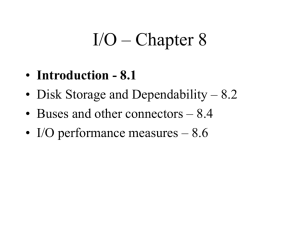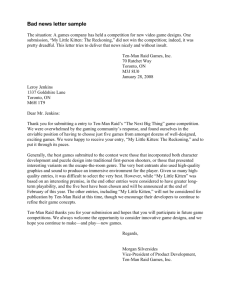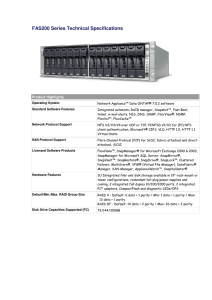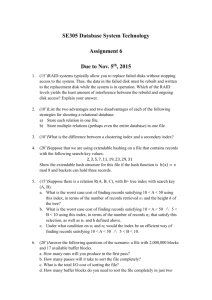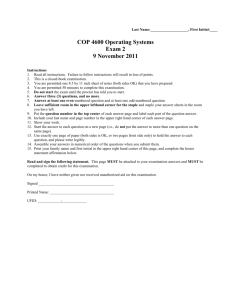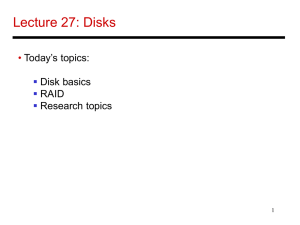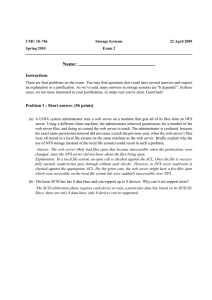CS 345 Homework #8
advertisement
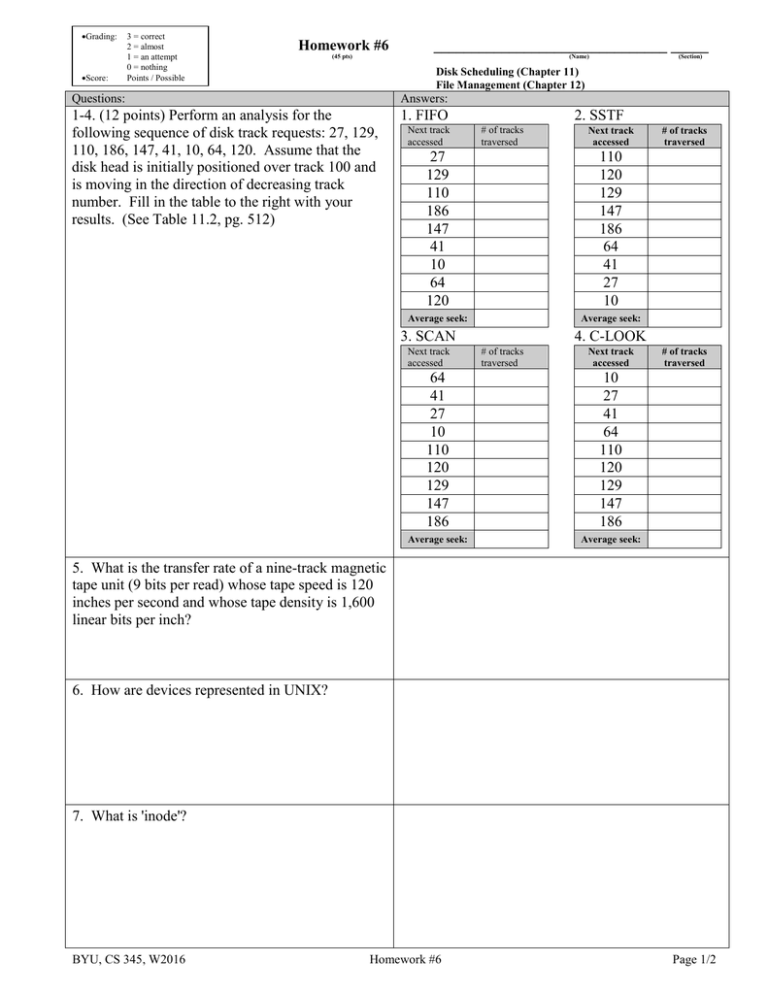
Grading: Score: 3 = correct 2 = almost 1 = an attempt 0 = nothing Points / Possible Homework #6 _______________________________ _____ (45 pts) (Name) (Section) Disk Scheduling (Chapter 11) File Management (Chapter 12) Questions: Answers: 1-4. (12 points) Perform an analysis for the following sequence of disk track requests: 27, 129, 110, 186, 147, 41, 10, 64, 120. Assume that the disk head is initially positioned over track 100 and is moving in the direction of decreasing track number. Fill in the table to the right with your results. (See Table 11.2, pg. 512) 1. FIFO Next track accessed 2. SSTF # of tracks traversed Next track accessed 27 129 110 186 147 41 10 64 120 110 120 129 147 186 64 41 27 10 Average seek: Average seek: 3. SCAN Next track accessed # of tracks traversed 4. C-LOOK # of tracks traversed Next track accessed 64 41 27 10 110 120 129 147 186 10 27 41 64 110 120 129 147 186 Average seek: Average seek: # of tracks traversed 5. What is the transfer rate of a nine-track magnetic tape unit (9 bits per read) whose tape speed is 120 inches per second and whose tape density is 1,600 linear bits per inch? 6. How are devices represented in UNIX? 7. What is 'inode'? BYU, CS 345, W2016 Homework #6 Page 1/2 8. What happens to a FAT12 disk when a file is deleted? 9. Using variables BPB_BytsPerSec, BPB_SecPerClus, BPB_NumFATs, and BPB_RootEntCnt, give a formula for the size of a FAT12 disk. (2 points each) Answer questions 10 thru 18 with the most applicable RAID implementation. a. RAID 0 b. RAID 1 c. RAID 2 d. RAID 3 e. RAID 4 f. RAID 5 g. RAID 6 h. RAID 10 10. Shared parity disks - each entire block is written onto a data disk. Parity for same rank blocks is generated on Writes, recorded on the parity disk and checked on Reads. 11. Not a "True" RAID because it is NOT faulttolerant. Should never be used in mission critical environments. 12. Protects against multiple bad block failures while non-degraded and against a single bad block failure while operating in a degraded mode Perfect solution for mission critical applications. 13. Simplest RAID storage subsystem design, highest disk overhead of all RAID types. 14. Very expensive / High overhead - All drives must move in parallel to proper track lowering sustained performance - Very limited scalability at a very high inherent cost. 15. Very high ratio of ECC disks to data disks with smaller word sizes – inefficient, but "On the fly" data error correction. No commercial implementations exist / not commercially viable 16. Distributed parity blocks - Used for File and Application servers, Database servers, Web, Email, and News servers, Intranet servers - Most versatile RAID level. 17. Parallel transfer with parity - the data block is subdivided ("striped") and written on the data disks. Stripe parity is generated on Writes, recorded on the parity disk and checked on Reads. 18. Implemented as a striped array whose segments are RAID 1 arrays - has the same overhead for fault-tolerance as mirroring alone - Under certain circumstances, can sustain multiple simultaneous drive failures. BYU, CS 345, W2016 Homework #6 Page 2/2
